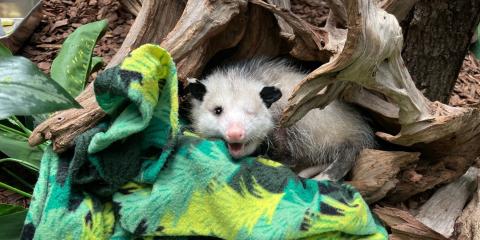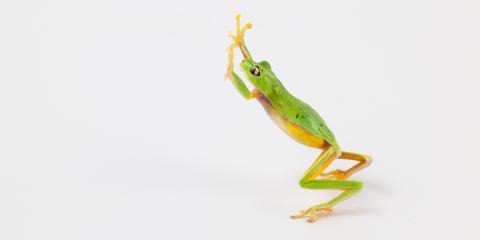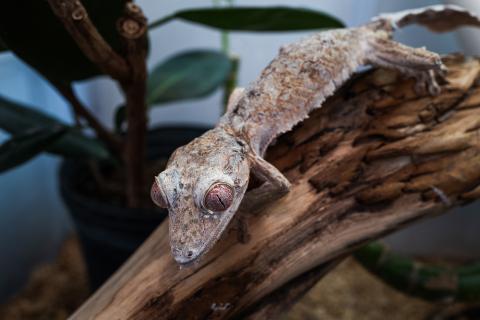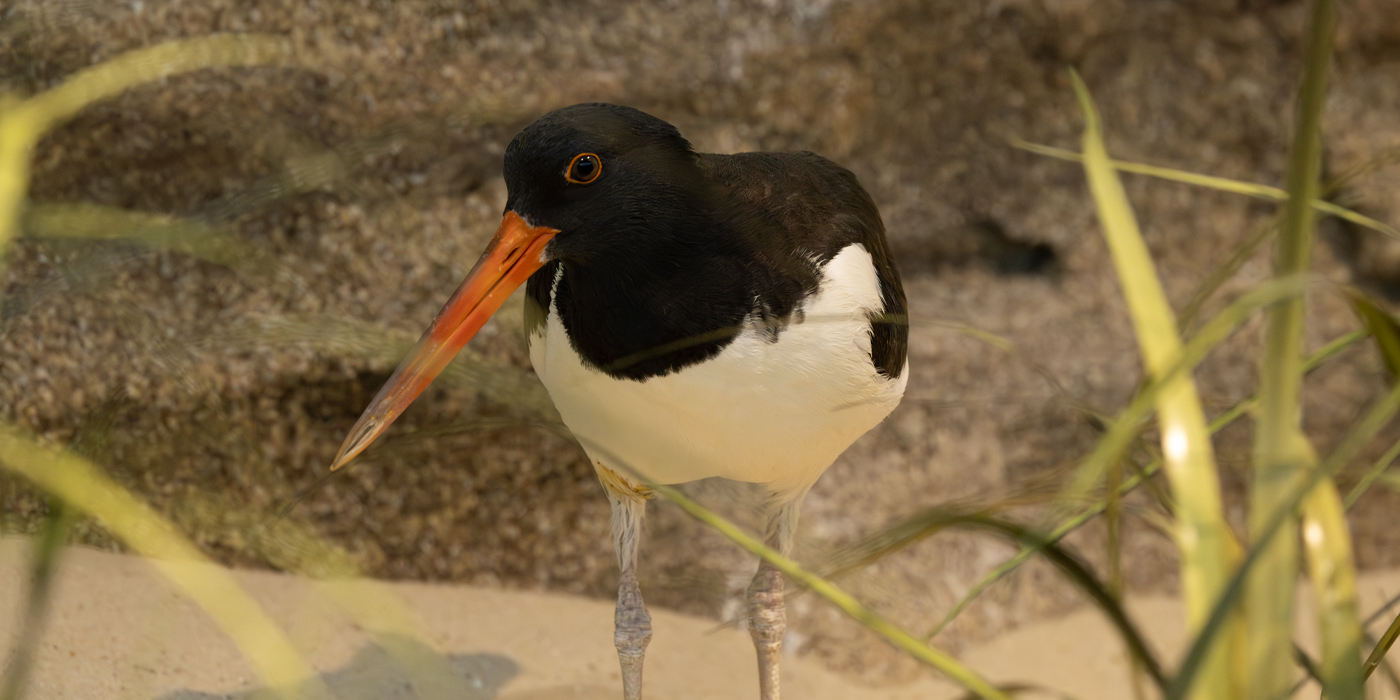Physical Description
American oystercatchers are chunky, medium-sized shorebirds with bold, black head plumage that almost resembles a hood. Adults have long, thick, pointed beaks that are reddish-orange in color. They have yellow eyes surrounded by a bright orange ring. The upper parts of their bodies are dark brown, and the undersides are white. They have long, pale pink legs and short tails.
Size
Native Habitat
Lifespan
Communication
Food/Eating Habits
American oystercatchers are specialized to feed on saltwater mollusks, although they can eat a wide variety of invertebrates, including bivalves, gastropods, limpets, mussels and chitons, along with the occasional fish or crustacean.
The best opportunities for American oystercatchers to forage is when the tide begins to recede, revealing partially-submerged mollusks with their shells still open for feeding. These birds hunt along sandy beach areas, walking slowly and probing their beaks into the sand. After spotting a bivalve, they quickly jab and plunge their bills into the open shells of their prey, pulling out the contents within. Alternatively, the birds will pry open the shell or use their bill to hammer on the outside until it cracks open.
Social Structure
Reproduction and Development
American oystercatchers are monogamous, often pairing up with the same mate year-over-year, and sometimes returning to the same nest site. Males are territorial during the breeding season and will chase out other males from their breeding areas. These birds are quite boisterous during the breeding season; pairs will perform courtship displays and make a series of piping and squeaking calls and vocalizations before mating.
Their nests, called scrapes, are shallow depressions dug into the ground that are lined with sticks. These scrapes are made in sandy or rocky spots near the shoreline, hidden to avoid predation from nest predators like raccoons and skunks. Females lay 1-4 brown-speckled eggs, which they incubate for 24-28 days. Both males and females take turns incubating the eggs, although females do the majority of the nest sitting. After hatching, chicks are covered in soft, sandy-colored plumage, and are ready to walk and leave the nest just a few hours after hatching. Both parents help feed the young for about two months, after which the chicks are large enough to hunt for bivalves on their own.
Conservation Efforts
Help this Species
- Practice ecotourism by being an advocate for the environment when you’re on vacation. During your travels, support, visit or volunteer with organizations that protect wildlife. Shop smart too! Avoid buying products made from animals, which could support poaching and the illegal wildlife trade.
- Organize or attend a stream, river, lake or other waterway cleanup in your area to preserve aquatic habitats for local species.
- Are you a hunter? You can be an incredible ally for conservation! Check the conservation status of the animals you hunt and use methods that don’t impact other animals.
- Avoid single-use plastics, such as plastic bottles, bags and utensils. Choosing reusable options instead can help reduce plastic pollution.
- Protect local waterways by using fewer pesticides when caring for your garden or lawn. Using fertilizers sparingly, keeping storm drains free of litter and picking up after your pet can also improve watershed health.
Animal News

Remembering Basil, Our Virginia Opossum

Happy Amphibian Week 2025


